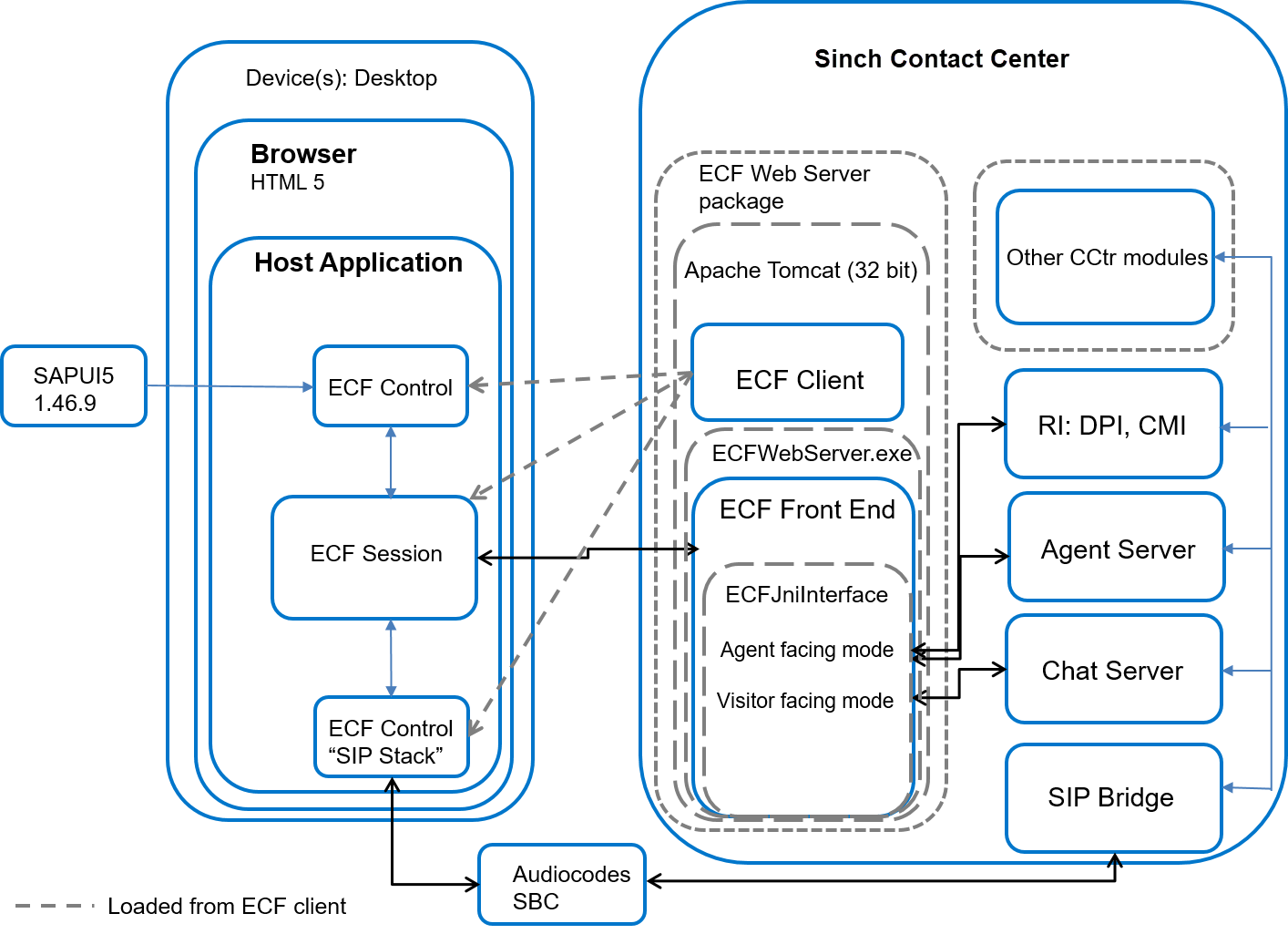Embedded Communications Framework (ECF)
ECF is a platform for embedding contact center services into business applications.
For the basic principle of the embedded system, see the overview figure below.

Installation Process
-
Using ECF requires that there is at least one SIP Bridge installed in the system that is not connected to any trunk (gateway). SIP Bridge can be connected to External Terminal Controller (ETC) but for ECF that is not required. As of 1705, ECF automatically uses all SIP Bridges in the system that are not connected to a trunk (gateway).
-
In a multi-tenant environment, if one third-party SIP gateway is used for several customers’ Contact Center system’s ECF calls, the client’s real SIP addresses with domain names must be configured in that gateway. ECF client’s SIP address’s domain name is now automatically formed based on the Agent Server instance the user’s ECF session is currently on. The domain name is formed from AgentServer:[VU_NAME] by replacing all other than alphanumeric characters with - (en dash) character and by changing all letters to lower case.
For example, if a user’s ECF client’s session currently is on an Agent Server in virtual unit named VU_ABC, the domain part of the SIP terminal’s address becomes agentserver-vu-abc.
-
If any of the Restful Interfaces (RI), such as Directory and Presence Interface (DPI) is used together with ECF, and communication between RI and ECF Web Server needs to be secured, you must make sure that the following conditions are fulfilled in both ECF Web Server and RI installation.:
-
TCP Port Number for HTTPS is defined during installation.
-
IP addresses of both ECF Web Server and RI virtual units are added as extensions to the certificate.
-
Java trusts the certificate, or its issuer.
-
-
As of version 1611, communication can be secured:
To enable secured communication between ECF Web Server and Restful Interfaces, add the IP addresses of both ECF VU and RI VU to both ECF and RI certificate request extensions. For example:
[NewRequest] Subject = "CN=<common name>,O=<organization>,OU=<organizational unit>,L=<location/city>,S=<state/province>,C=<country>" Exportable = TRUE KeySpec = 1 KeyLength = 2048 MachineKeySet = TRUE HashAlgorithm = sha256 [EnhancedKeyUsageExtension] OID = 1.3.6.1.5.5.7.3.1 [Extensions] 2.5.29.17 = "{text}" _continue_ = "DNS=[Fully Qualified Domain Name (FQDN)]&" _continue_ = "ipaddress=[IP address of ECF VU]&" _continue_ = "ipaddress=[IP address of RI VU]&"When you receive the certificate, enter it or the issuer to Java folder, for example use a command of the following type, according your system file structure:
SET JAVA_HOME=C:\Program Files (x86)\Java\jre1.8.0_112 "%JAVA_HOME%\bin\keytool" -import -alias SAP_CCtr -file [certificate file name] -keystore "%JAVA_HOME%\lib\security\cacerts" -storepass changeit -noprompt -
Installing virtual units in Infrastructure Administrator (IA)
-
As of 1611, ECF uses SAPUI5 instead of OpenUI5: (Using SAPUI5).
